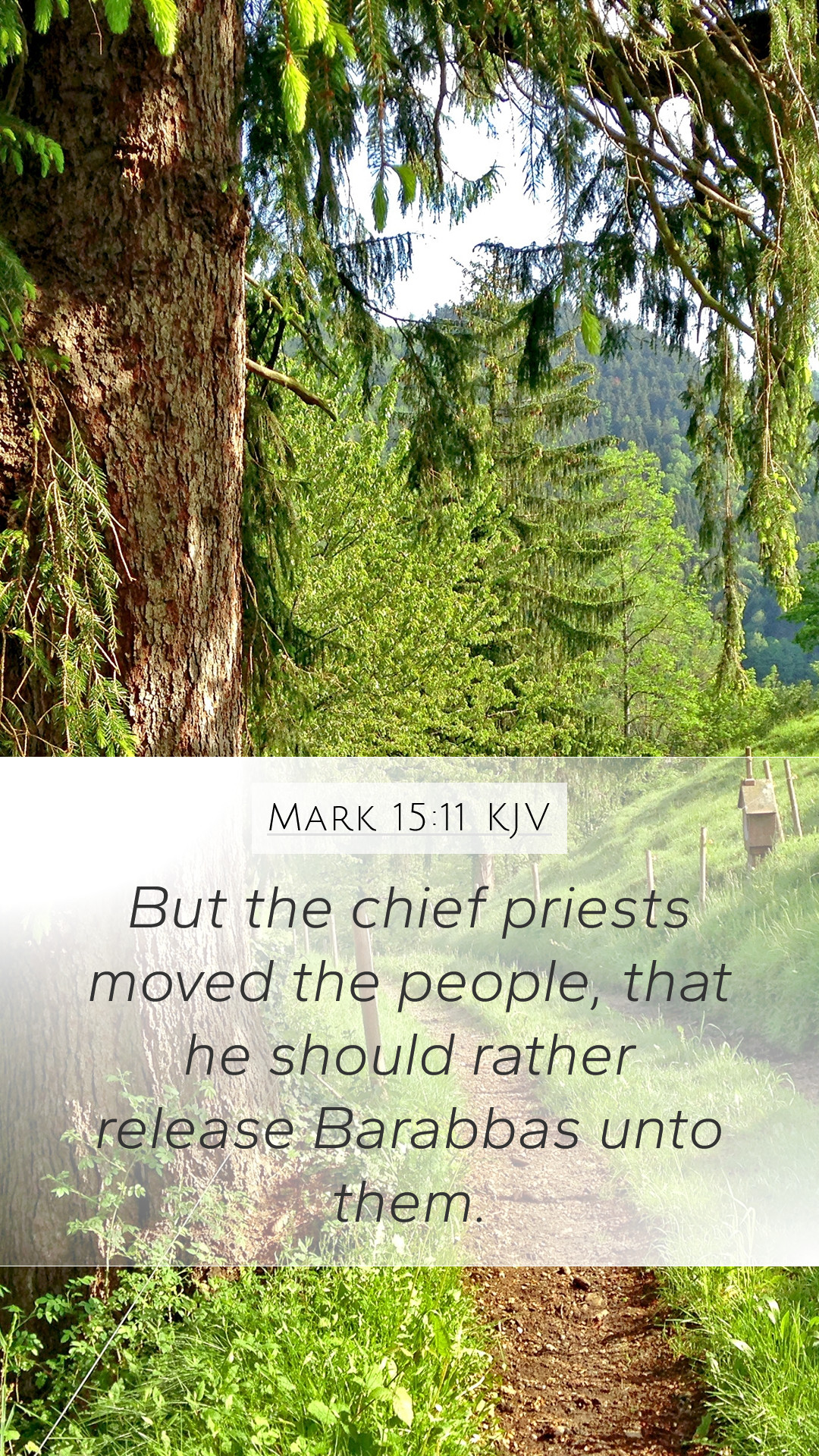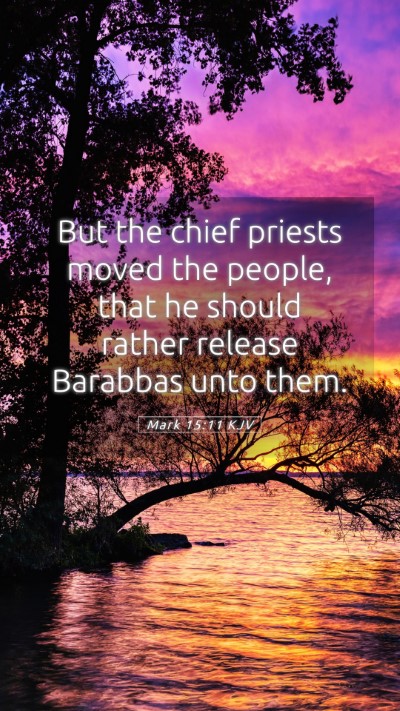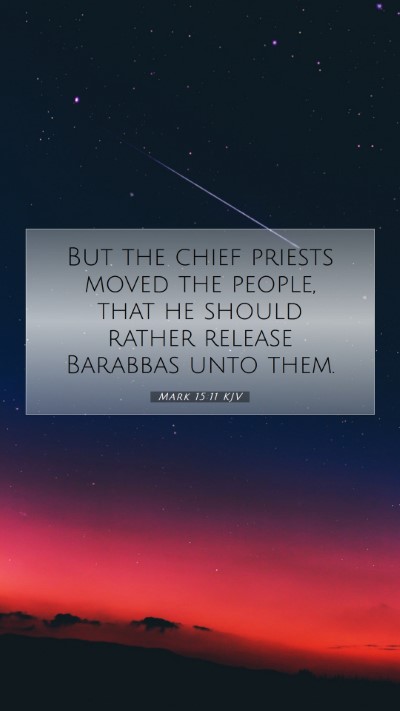Understanding Mark 15:11
Mark 15:11 provides a significant insight into the events leading to the crucifixion of Jesus Christ. To gain an understanding of this verse, we will explore various commentaries including those by Matthew Henry, Albert Barnes, and Adam Clarke, while providing a comprehensive analysis that will aid in Bible study, enriching our knowledge of Scripture.
Verse Context
Mark 15:11 states, “But the chief priests stirred up the crowd to have him release Barabbas instead.” This moment occurs during the trial of Jesus before Pontius Pilate, illustrating the intense opposition Jesus faced from religious leaders and the fickleness of the crowd.
Key Themes
- The Influence of Leadership: The chief priests had significant sway over the people, demonstrating how corrupt leadership can manipulate public opinion.
- Choice of Barabbas: The choice between Jesus and Barabbas, a notorious criminal, represents a grave moral failure by the people, indicating their rejection of the Messiah.
- The Fickleness of Crowds: The crowd's decision to favor Barabbas highlights human impulsiveness and the danger of following popular opinion rather than truth.
Commentary Insights
Matthew Henry's Commentary
Matthew Henry emphasizes the role of the religious leaders as they incite the crowd against Jesus. He points out that the chief priests, driven by jealousy and hatred, manipulated the situation to favor Barabbas, indicating how easily the masses can be swayed when led by those in authority. Henry also notes the irony in the choice made by the people, showcasing the fulfillment of prophecy through their rejection of Jesus.
Albert Barnes' Commentary
Albert Barnes observes that the release of Barabbas instead of Jesus is an example of the dreadful consequence of sin and judicial blindness. He explains that Pilate's attempt to release Jesus, a man he found innocent, is thwarted by the manipulation of the chief priests. Barnes interprets this choice as a reflection of the nature of the human heart, which frequently prefers chaos over righteousness.
Adam Clarke's Commentary
Adam Clarke delves into the cultural implications of this verse, suggesting that the choice reflects both social pressures and the prevailing sentiments of the Jewish populace at the time. He discusses the character of Barabbas, a revolutionary, contrasting him with Jesus, who represents peace and forgiveness. Clarke argues that this moment is pivotal, representing a loud rejection of God’s appointed Savior.
Cross References
- Matthew 27:20
- Luke 23:18-25
- John 18:40
Application and Reflection
Understanding Mark 15:11 can lead to deeper insights into human nature and spiritual leadership. It challenges us to consider how we are influenced by authority figures and encourages self-reflection on our convictions. Furthermore, it serves as a reminder to seek truth amidst societal pressures and to stand firm in our faith when faced with moral dilemmas.
Conclusion
This verse is a crucial point in the narrative of the New Testament, emphasizing themes of betrayal, manipulation, and the fulfillment of prophecy. By studying Mark 15:11 alongside other scriptural insights, we enrich our Bible study experiences and deepen our understanding of Scripture. For those involved in Bible study groups, these insights can foster discussions on leadership, morality, and the significance of Jesus’ sacrifice.


